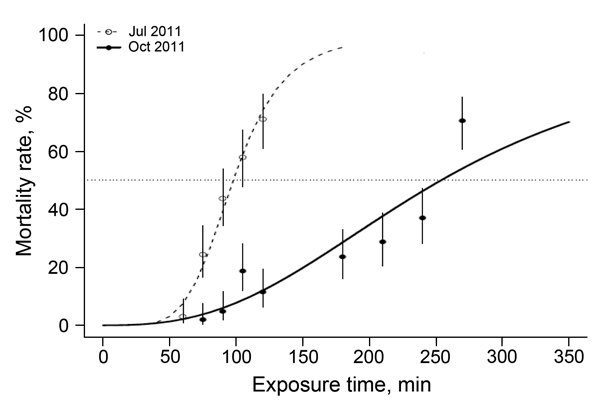Volume 20, Number 10—October 2014
Research
Increased Pyrethroid Resistance in Malaria Vectors and Decreased Bed Net Effectiveness, Burkina Faso
Figure 2

Figure 2. Time-response curves for Anopheles gambiae VK7 mosquitoes, Burkina Faso, July–October 2011. Adult females were exposed to 0.05% deltamethrin according to World Health Organization standard protocols. Time-response curves were fitted to data by using a regression logistic model and R software (http://www.r-project.org/). Dotted line indicates 50% mortality rate. Error bars indicate 95% binomial CIs for each time point. The 50% lethality times were 1 h 38 min for July and 4 h 14 min for October, which indicates an October:July resistance ratio increase of 2.6-fold.
Page created: September 12, 2014
Page updated: September 12, 2014
Page reviewed: September 12, 2014
The conclusions, findings, and opinions expressed by authors contributing to this journal do not necessarily reflect the official position of the U.S. Department of Health and Human Services, the Public Health Service, the Centers for Disease Control and Prevention, or the authors' affiliated institutions. Use of trade names is for identification only and does not imply endorsement by any of the groups named above.